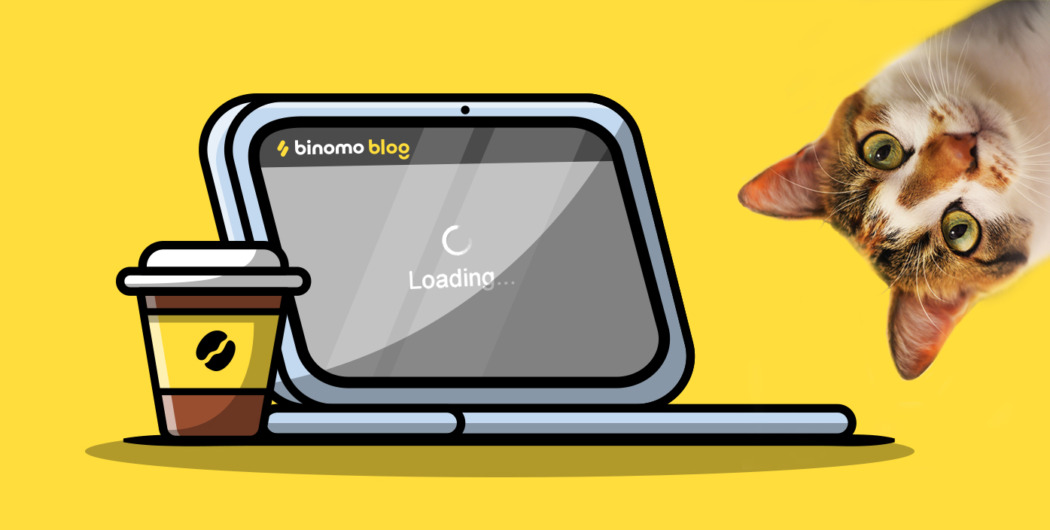

Negotiable instruments are legal documents that guarantee payment on demand or at a future date. This article will sail you through the nuances, types, and benefits these legally binding documents offer.
What is a negotiable instrument?
“Negotiable” means transferable, and “Instrument” means a document. It is a given legal bounding by the law.
A negotiable instrument is an unconditional promise or order to pay a fixed amount, with or without interest or other charges described in the contract or order to a specified person (the payee). It may encompass the following:
- Payable to the bearer or to order when it is issued or when it first comes into possession of a holder.
- Payable on demand or at a definite time.
- It may not state any other undertaking or instruction by the person promising or ordering payment to do any act besides the payment of money.
- The promise or order may contain an undertaking or power to give, maintain, or protect collateral to secure payment.
- An authorization or power to the holder to confess judgment or realize on or dispose of collateral or a waiver of the benefit of any law intended for the advantage or protection of an obligor.
Negotiable instruments are different from non-negotiable ones. The negotiable instruments are transferable to other people, and the beholder of the documents holds the legal right to get the money or benefits mentioned in the instrument.
Negotiable instruments contain information such as principal amount, interest rate, date, and the payor’s signature.
Understanding negotiable instruments
In simple words, a negotiable instrument is a document that guarantees the payment of a specific amount, either on-demand or on a specified date and time. The payer of this money is usually mentioned on the document. It is considered a contract that promises the payment of money without any conditions.
Negotiable instruments are legally bound documents under the law of each country. Although the term is universal and used globally, the meaning depends on its use, context, specific law, and the country where it is being considered.
Features of negotiable instruments
A few basic and critical requirements must be fulfilled to make a document a negotiable instrument. Auditors, retailers, and financial institutions often use one or the other form of negotiable instruments. However, they make it a legally bound document by ensuring that the requirements of making it negotiable are met. The Uniform Commercial Code (UCC) lists specific prerequisites for negotiable instruments.
Some of the key features of a Negotiable instrument are:
- Transferable
It is usually quickly and freely transferable. Transfer of these documents should not be linked to legal formalities such as transfer deeds, registration, paying stamp duty, etc. The ownership is changed by delivery when it is payable to the bearer or by valid endorsement and delivery when it is payable to the order. There is no requirement to furnish a prior notice to the previous holder.
- Title
The ownership remains with the transferee. The person who receives a negotiable instrument has a clear and indisputable title over the instrument. The person who owns the instrument is called the holder.
- Written form
One of the prerequisites to consider a negotiable instrument as legal is that it must be in writing. The term writing for this purpose includes handwritten, typed, computer printout or engraving, etc.
- Unconditional order
The promise or order to pay as part of a negotiable instrument must always be unconditional.
- Payment method
It must involve the payment of a certain sum of money and nothing else. For example, a promissory note cannot be made for payment with some assets, security, or goods and services.
- Fixed timelines
The date and time for payment must be certain and fixed. It cannot be left as ambiguous and uncertain as at opportunity or other scenarios.
- Payee specific person
The person in whose favor the instrument is made must be named or described with reasonable certainty. It can be an individual, corporate body, trade union, or even an institution’s secretary, director, or chairperson. It means the payee can be more than one person.
- Signature
To consider a negotiable instrument as a legally binding document, its maker must duly sign it. An instrument cannot be considered valid without the drawer’s or the maker’s signature.
- Delivery
To make an instrument negotiable, it must be delivered to the payee. For example, you may issue a cheque in your father’s name, but it will not be considered a negotiable instrument until it is physically given to your father.
- Stamping
Stamping Bills of Exchange and Promissory Notes is legally required in many countries. However, the value of the stamp varies depending upon the value of the pro-note or bill and, in some cases, on the payment mode and time.
- Right to file a сase
The holder of the negotiable instrument has a legal right to file a suit in case of any discrepancy or non-payment.
- Prior notice of transfer
Giving prior notice before transferring a negotiable instrument to a third party is not legally mandatory. They can be transferred indefinitely till the date of maturity.
- Evidence
These instruments are in writing, signed by the parties, and therefore considered valid evidence in a court of law.
- Exchange
The payment clause says that the negotiable instrument must involve payment for a specified amount. However, these are considered money substitutes and are accepted in exchange for goods because cash can be obtained for them at any moment by paying a small commission.

Types of negotiable instruments
Negotiable instruments are of many types. However, they are read under two heads: “order to pay”, which covers drafts and checks, and “promise to pay”, which covers promissory notes and Certificates of Deposit (CDs).
Certain negotiable instruments which form a part of this term and are used the world over are:
- Cheques;
- Promissory Notes;
- Treasury Bills;
- Bills of Exchange;
- Money Order;
- Certificate of Deposit;
- Traveler’s Cheque;
- Bearer Bonds.
Let’s now understand a few common ones out of the above.
Personal cheques
If you have some money in the bank, only then are you authorized and can sign cheques to pay others. These cheques can be post-dated and issued with the bearer’s name or as a self-cheque that can be encased by anyone who has the cheque. The amount required to be paid is mentioned in the cheque.
In many countries, online banking has taken the lead, and the usage of cheques has reduced. The primary reason behind this is the slow processing speed and the requirement of physically going to the bank.
Traveler’s cheques
It is a popular mode of payment used by people traveling to different countries. It is an accessible mode for dealing with foreign currency. Traveler’s cheques are issued by financial institutions such as banks or brokers dealing in currency. These are authenticated, filled with serial numbers, and topped up with prepaid amounts.
The traveler doesn’t have to carry currency notes. This cheque guarantees the issuer will pay with a two-signature step verification mode. It means that the bearer’s signature when buying the traveler’s cheque must match the signature when it is issued in a foreign land.
Another advantage you get is the assurance of a refund or issuing of a new cheque in case of loss or theft.
The disadvantages of this instrument are the chances of fraud in terms of signature, issuance of counterfeit traveler’s cheques, etc. These are becoming obsolete as better banking facilities and prepaid and postpaid cards enter the market.
Certificate of Deposit
A Certificate of Deposit (CD) is an instrument issued by banks and financial institutions as a savings product that earns interest on a lump sum for a fixed period. However, a CD is different from a savings account, as the terms and conditions of a CD warrant that the money must remain untouched for a particular duration, or the user will have to bear a penalty in terms of fees or lose interest. They generally have higher interest rates than savings accounts as an incentive for lost liquidity.
Opening a CD account is the same as a normal savings bank account. The difference in terms of interest is what you agree to when you sign for a CD. The four things to be considered while opening a CD are the interest rate, the term, the principal amount, and the institution you choose in terms of a bank or a credit institution.
CDs offer fixed, safe, and insured interest rates that can often be higher than the rates paid by many bank accounts. The longer the term you choose, the better the CD rates.
Promissory notes
A promissory note is a negotiable instrument that contains a written promise by one party to pay another party a definite amount, either on demand or at a specified future date. It consists of all the terms of the indebtedness, such as the principal amount, interest rate, maturity date, date and place of issuance, and issuer’s signature.
A promissory note includes a promise to pay on demand or at a specified future date, and it also covers the steps required for repayment. In its simplest form, a promissory note might be a promise to repay a family member or a friend. Based on the country, state entities may regulate complicated promissory notes.
A corporate credit promissory note is an example of a promissory note.
Money order
A money order is a safe alternative to cash or a personal cheque normally issued by a government or banking institution. It works like a cheque and can easily be cashed or deposited into a bank account.
Money orders are easily accepted and converted to cash and are often used by people without access to a bank account. They are an acceptable form of payment for personal and business debts and can be purchased for a small service fee from most institutions.
Money orders were first issued by American Express in 1882 and later became popularized as traveler’s cheques. If you lose a money order, it can be replaced for a fee. International money orders can be inexpensive to send money across the border and overseas quickly.
There is a requirement to fill in the recipient’s name on a form and the amount that the recipient should receive. In some countries, a monetary limit remains up to $1,000. You might have to purchase multiple orders if you need more than that amount.
The benefits of negotiable instruments
Negotiable instruments offer a lot of benefits to the users. That is the reason why they are used extensively across the world. A few benefits offered by it are:
- Quick and instant ways of transferring money.
- The process does not involve a lot of paperwork or formalities.
- No restrictions on the number of transfers of promissory notes or bills of exchanges. They can be transferred as long as they reach the settlement period.
- To meet their immediate financial requirements, debtors can exercise the option of quick receipts by going to any financial institution and discounting the bill or notes.
- Legally valid instruments for settling claims even in international trade. Importers and exporters of various countries use this option to clear their financial obligations.
- Negotiable instruments are more flexible than non-negotiable instruments.
The bottom line
A negotiable instrument is a legal tender for money. It can be easily used to clear liabilities. The requirements, cost, timeline, and country of use dictate the selection of a particular instrument. At last, it can be safely assumed that the negotiable instruments are fast, secure, and reliable for guaranteeing money transfers. Their transferable advantage makes them a handy tool for clearing debts.











